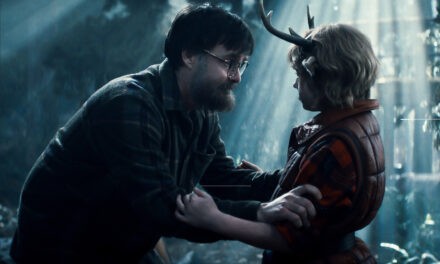VIEWJournal issue #25: The Changing Newsroom: Disinformation & Multimedia Journalism: The availability of technology and data as an opportunity and as a threat.
Presented by: MediaNumeric
Guest editors: Joke Hermes (InHolland University of Applied Sciences, MediaNumeric partner), Kuba Piwowar (SWPS, MediaNumeric partner) & Julia Conemans (Netherlands Institute for Sound & Vision, MediaNumeric partner & BENEDMO)
Publication date: Summer 2024
A wide range of technologies and data-driven innovations transform the modern media landscape in Europe, from the way content is created, to how it is distributed and interacted with. Television newsrooms, documentary makers, and creative storytellers rely more and more on technology and data to enable and increase direct and interactive access to information, explore new possibilities in formatting immense stores of information, and innovate in information presentation and transmission. But the broad accessibility to multimedia production and digital media tools can also pose a threat to trust in journalism. Notably, technologies generate new challenges for journalists,such as the easy, prolific spread of inaccurate and misleading information.
Moving images can be taken out of context, edited and manipulated, or newly-created based on data: deep fakes are crafted with such accuracy, they are hardly recognizable. And where the visual representation of data can be very helpful for example to clarify scientific content, data visualisations can also be easily manipulated to support a false claim.
Both disinformation (the intentional spread of false information) and misinformation (the spreading of false information that one believes to be accurate) causes harm on an individual and societal level. It can misinform our opinions, mislead our actions, distort government policies and democratic processes and disenfranchise the vulnerable in a variety of ways. It can also harm the quality of an open media ecosystem, as exposure can lead to increased distrust in traditional media.
This issue of VIEW explores how television newsrooms and other media outlets navigate the immense availability of technologies and data in the reality of the increasing spread of disinformation and misinformation. The use of multimedia and technological advances in the area of automation, interaction and distribution is a major opportunity for journalists and visual storytellers. Multimedia materials (including archival moving images) can play an increasingly crucial role in journalism in the sense that they can be 1. analyzed to verify given information 2. used to generate a factual (news)story based on a research question and 3. used to create and present stories in an informative and appealing way.
This changing landscape impacts the profession of journalism also on an individual level: a gap exists between the needs of journalists in their day to day practice and the training journalists have received. The pace of media production and consumption has changed, distrust towards traditional journalism has grown, and another layer of complexity has been added by easy access to an immense amount of digital and technological resources. These developments call for a strong focus on continuous training in media, data, and digital literacy for journalists, storytellers and other media professionals.
Topics for consideration include, but are not limited to:
The changing profession:
- new practices in data/data-driven journalism in visual media
- debunking false claims (such as fact-checks) using new, visual technology
- critically examining how AI and machine learning are becoming part of the journalism toolbox
- broad access to the creation of multimedia and its relation to trust in traditional journalism
- ethical considerations in journalism concerning the use of multimedia (e.g. moving image archival materials) and data
- the changing profession of journalism and re-organisation of newsrooms/editorial teams around creating with data (and/or) multimedia
- what are the critical considerations for using osint-activities for journalism (including best and worst practices)
The changing landscape:
- what are the current literacy needs for a changing and technologically advanced media landscape
- critical examinations of the rising presence of ‘Alternative Media’ and its effects on consumers and/or more traditional news organisations
- use of data and multimedia in storytelling and television news delivery through the years
- analyses of how oppressive regimes use new tools for propaganda and disinformation purposes
- how are new tools for propaganda and disinformation purposes used by oppressive regimes
New technological advances impacting the field:
- the impact of synthetic media (f.i. deep fakes) and other ways of manipulating imagery
- data/information visualisation, its benefits and risks
Submission details
We invite submissions from broadcast historians, media studies scholars, audiovisual archivists and television professionals including journalists, data scientists working in journalism, and creative storytellers using multimedia, and others.
Proposals (max. 500 words) should be submitted by email to journal@euscreen.eu by December 20, 2022 February 14, 2023 (extended deadline). Article proposals can (optionally) mention if they will take the form of a “discovery” (audiovisual-driven case study) or “exploration” (more traditional academic approach; for further info see https://viewjournal.eu/about/). Authors are encouraged to send in a short biography with their proposal.
A notice of acceptance of abstracts will be sent to authors by the middle of February 2023.
Articles (between 3,000 – 6,000 words) will be due on May 15, 2023. Longer articles are welcome, provided that they comply with the journal’s author guidelines (https://viewjournal.eu/about/submissions/).
All articles will be peer-reviewed. The issue will be published in June 2024.
Questions about the issue can be directed to: jconemans@beeldengeluid.nl





